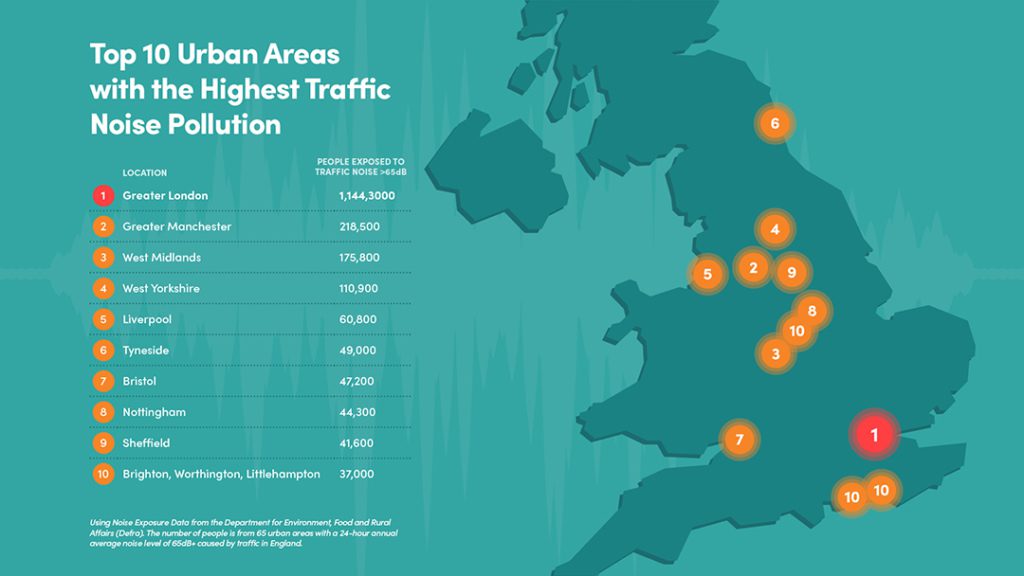TRAFFIC in towns and cities is well known for adding to air quality issues, however it’s not just the air we breathe that can be polluted; noise pollution is a huge problem too.
With electric vehicles offering a solution to local air pollution thanks to zero tailpipe emissions, there are additional benefits for plug-in vehicles.
The naturally quieter nature of the electric motor compared with an internal combustion engine means that noise pollution levels will drop as EVs become increasingly common on our roads. It’s likely to be by around 40% by 2050.
Research by Birmingham broker Vehicle Contracts, sourced from Defra data, indicates that one in five people have their health affected by noise pollution, and that London has the highest levels of daily and nightly noise pollution from traffic.
EVs could reduce noise pollution be almost 40%, without any change in how much traffic there is – replacing internal combustion engine vehicles with electric ones.
Defra’s statistics show that noise pollution from traffic affects more than 11.5 million people in England, around 20% of the population.
Noise is the second most harmful environmental factor to health after air pollution according to the World Health Organisation (WHO). Health issues as a result of excessive noise include hypertension, increased stress levels and blood pressure, hearing loss, heart disease, and child reading impairment.

London’s noise pollution levels sees more than 1.1 million people exposed to levels of 65dB and over, one in 10 of the city’s population. Add in those affected by traffic noise of 55dB and over – the lowest recorded levels by Defra – and that figure jumps to 2.6 million people, around 30% of the population.
Electric vehicles running without an AVAS (Acoustic Vehicle Alerting System – a ‘noise maker’ to help pedestrians hear EVs coming) can produce around 40dB. Regulations mean that all newly-produced EVs must have one fitted, but even when an AVAS system is on, the noise levels increase to only 54dB on average.
Compared with the levels of a typical petrol or diesel car at around 80dB, replacing like for like would reduce noise pollution by 38.8%. Factor in the typical levels of a motorbike or lorry at around 93dB, and EVs would have an even greater impact.
Exposure to noise pollution over 40dB at night can also impact upon health due to sleep disturbance, exacerbating the above issues, and adding elements such as weight gain, diabetes, and types of cancer according to WHO research.
Looking at nighttime noise levels of 40dB or higher, 1.8 million people in London are impacted by noise pollution, while Greater Manchester’s figures move up to 592,000 from a daytime figure at 65+dB of 218,500.
Electric vehicles do contribute to noise pollution, though at significantly lower levels. Wind and tyre noise is generated, just like petrol and diesel models, but that’s about it. AVAS systems need by law to create a noise of 56dB on safety grounds at speeds of 12mph and less.
Above that speed, an EV actually gets quieter, with no AVAS meaning only wind and tyre noise are heard, but accepted to be at a high enough level for other road users to hear the vehicle approaching.



